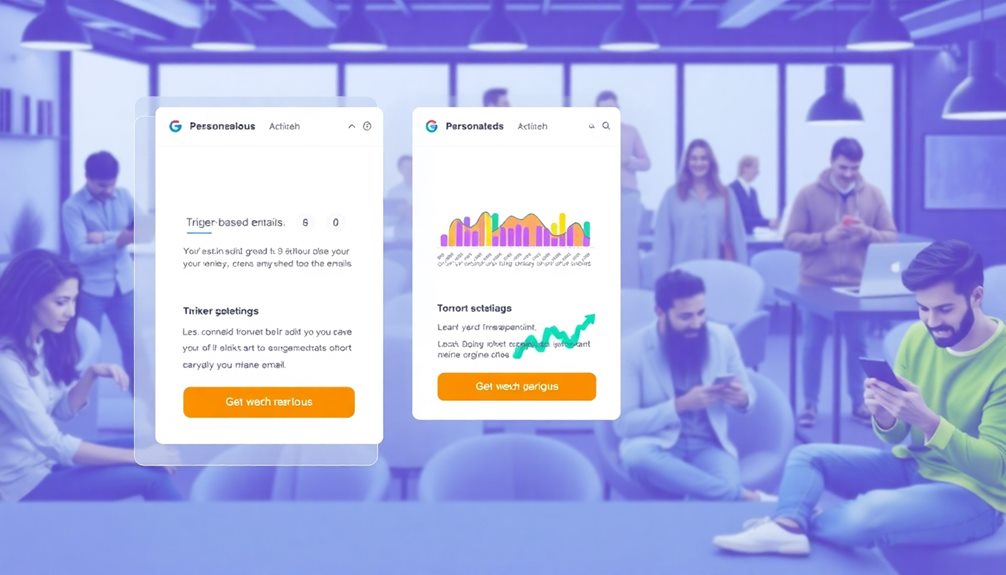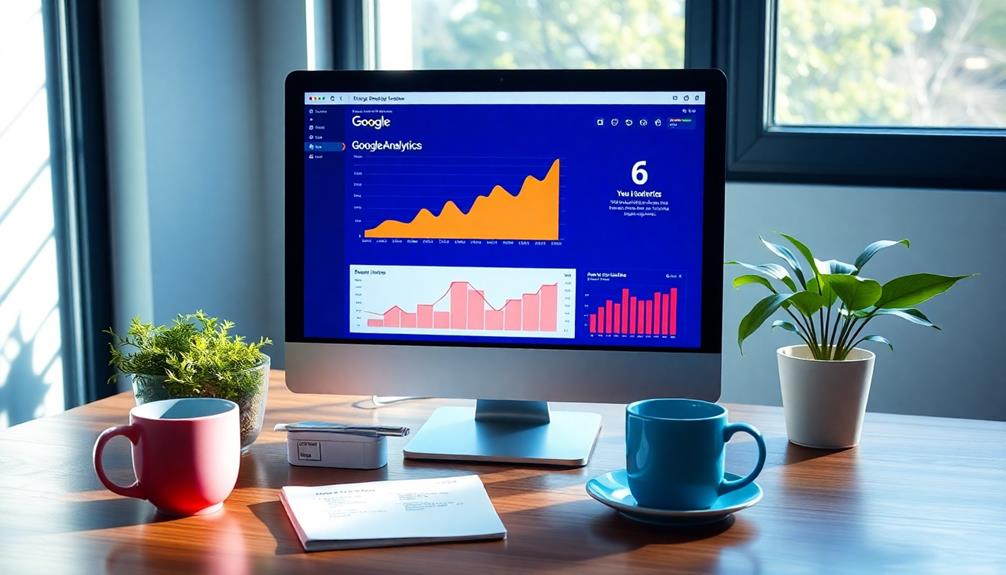To optimize your trigger-based emails for maximum impact, focus on timing and personalization. Send emails promptly after key customer actions, like cart abandonment or first purchases, to enhance engagement. Utilize dynamic content tailored to specific behaviors for a more personalized experience. A/B test your subject lines and calls to action to boost open and conversion rates. Don't forget mobile optimization, as over half of emails are opened on mobile devices. By leveraging these strategies, you'll increase your chances of achieving higher conversion rates and customer loyalty. Stick around to discover more effective techniques for your campaigns.
Key Takeaways
- Utilize A/B testing for subject lines, content, and CTAs to enhance open and conversion rates significantly.
- Personalize emails based on customer behavior and preferences to meet the 71% consumer demand for tailored experiences.
- Send cart abandonment emails within an hour to boost conversion rates by up to three times.
- Optimize emails for mobile devices, as 55% of emails are opened on mobile, ensuring a seamless experience.
- Leverage dynamic content and micro-segmentation to deliver relevant and timely communications, driving engagement and revenue growth.
Understanding Trigger-Based Emails
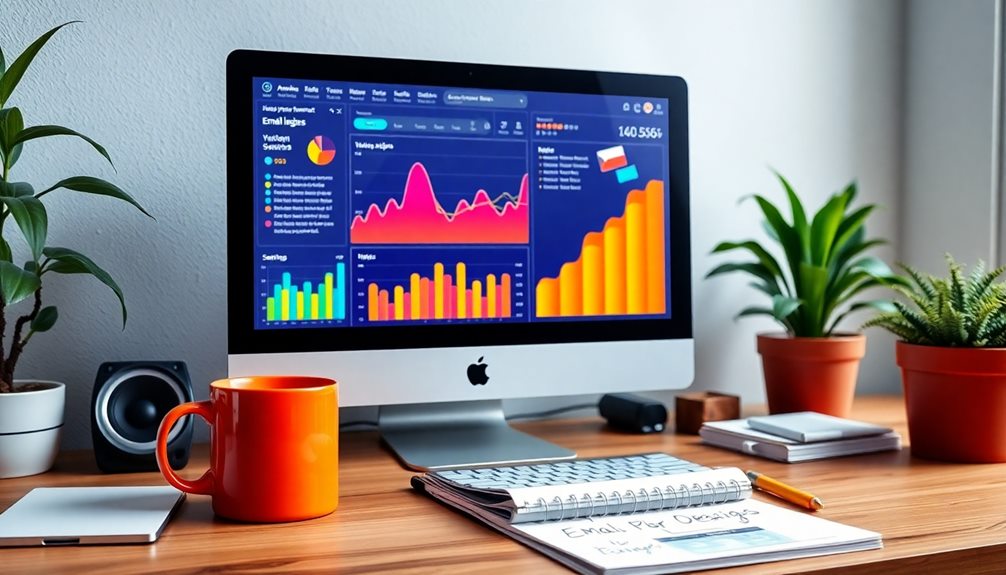
When you think about effective email marketing, trigger-based emails often stand out as a powerful tool. These automated communications respond directly to specific customer actions, such as sign-ups or cart abandonment, making them incredibly relevant.
By implementing an email marketing strategy that includes triggered emails, you can create personalized emails that resonate with your audience. This approach aligns with the need for continuous learning in today's fast-paced digital landscape, guaranteeing that your marketing efforts evolve with customer preferences.
Triggered emails, like cart abandonment emails, are pivotal moments in your marketing automation efforts. They allow you to engage your audience at just the right time, leading to higher conversion rates. In fact, these emails boast a remarkable 624% higher conversion rates than traditional marketing emails, which means they can greatly boost your revenue.
Moreover, by utilizing customer data effectively, you can tailor your messages to different customer segments. This personalization matters, as 71% of consumers prefer tailored experiences.
With open rates averaging 35.64% and click-through rates of 5.31%, triggered emails clearly outperform standard emails. Embracing this approach not only enhances your email marketing strategy but also guarantees you connect meaningfully with your customers.
Benefits of Trigger-Based Marketing
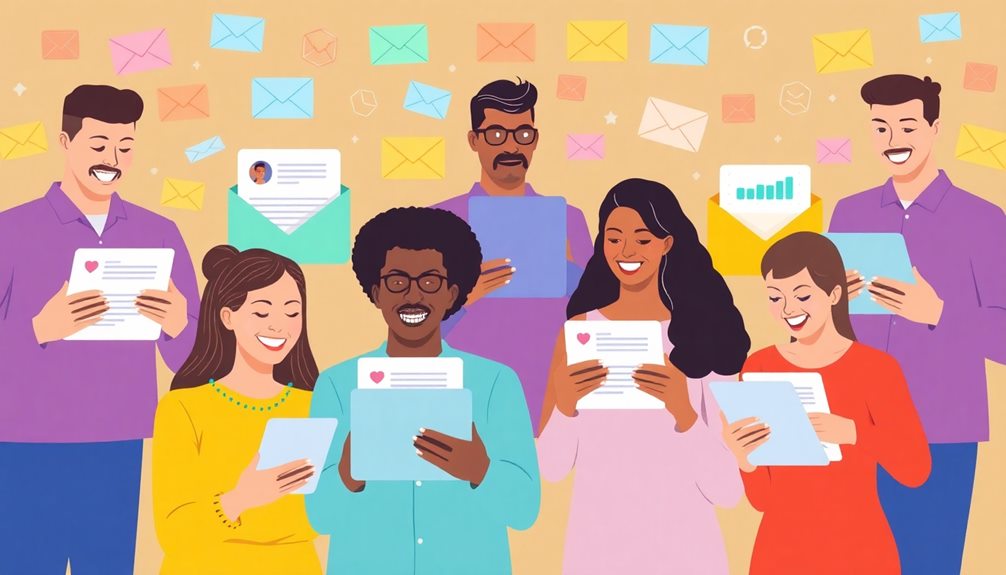
Trigger-based marketing offers considerable advantages that amplify the effectiveness of your email campaigns. By implementing triggered email marketing, you deliver timely messaging that resonates with your audience and aligns with best ways to earn online strategies. This approach enhances engagement and boosts customer retention, resulting in a remarkable 25% profit increase with just a 5% rise in retention rates.
Personalized messages are at the heart of trigger-based marketing, improving click-through rates by 14% and conversion rates by an impressive 10%. When your communications are relevant, recipients are more likely to take action, which considerably enhances your overall campaign effectiveness.
Moreover, companies leveraging marketing automation for their triggered emails see long-term success; 79% of top-performing organizations have utilized these strategies for over three years. Triggered emails also account for over 75% of all email marketing revenue, making them essential for driving sales and fostering customer interactions.
With conversion rates that can be 624% higher than traditional batched marketing emails, it's clear that timely, relevant messaging is powerful. Embrace trigger-based marketing to optimize your email campaigns and watch your engagement and revenue soar.
Key Trigger Events to Utilize
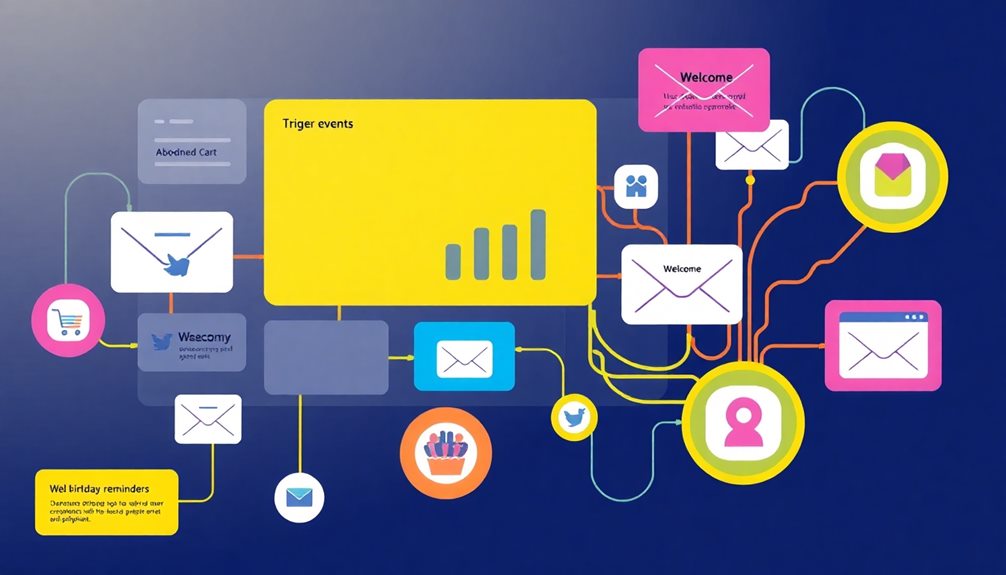
Understanding key trigger events can greatly enhance your email marketing strategy. By leveraging triggered emails, you can effectively engage customers at critical moments, driving conversions and loyalty.
Here are some essential trigger events to take into account:
| Trigger Event | Impact |
|---|---|
| Cart Abandonment | Recovers lost sales, boosting conversions by 3X |
| Welcome Emails | Generates 4x more opens and 5x more clicks |
| Purchase Confirmation Emails | Encourages repeat sales with product recommendations |
Additionally, product view abandonment targets customers who showed interest but didn't complete their purchase. Reactivation emails can remind inactive users of their previous interactions, reducing churn and rekindling engagement. Timely emails, like those sent on birthdays or anniversaries, can enhance customer loyalty and create deeper connections with your brand.
Incorporating these key trigger events into your email strategy will help you craft timely emails that resonate with your audience. By focusing on these pivotal moments, you'll not only boost customer engagement but also foster lasting relationships with your subscribers.
Crafting Compelling Content
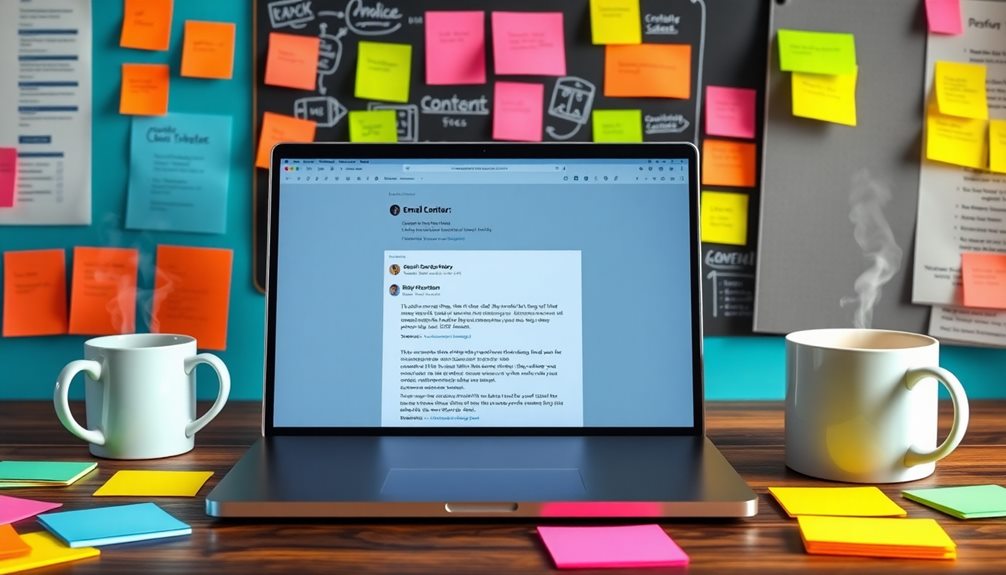
Crafting compelling content for your triggered emails is essential, especially since personalization can make a significant difference in engagement. Did you know that 71% of consumers prefer personalized experiences? This insight can help you increase engagement rates.
Incorporating elements that reflect a customer's interests, like their favorite herbal tea blends, can further enhance the personalization aspect; for instance, offering recommendations based on popular options such as chamomile's calming effects can resonate well.
Here are some key strategies to take into account:
- Use dynamic content tailored to customer behavior, like past purchases or browsing history.
- Include a clear call to action (CTA) that's brief and actionable, driving better conversion rates.
- Make sure your emails are mobile-responsive; after all, 55% of emails are opened on mobile devices.
- Test different elements through A/B testing, from subject lines to content layouts, to optimize performance continually.
- Offer relevant recommendations that resonate with individual preferences.
Personalization and Segmentation Strategies
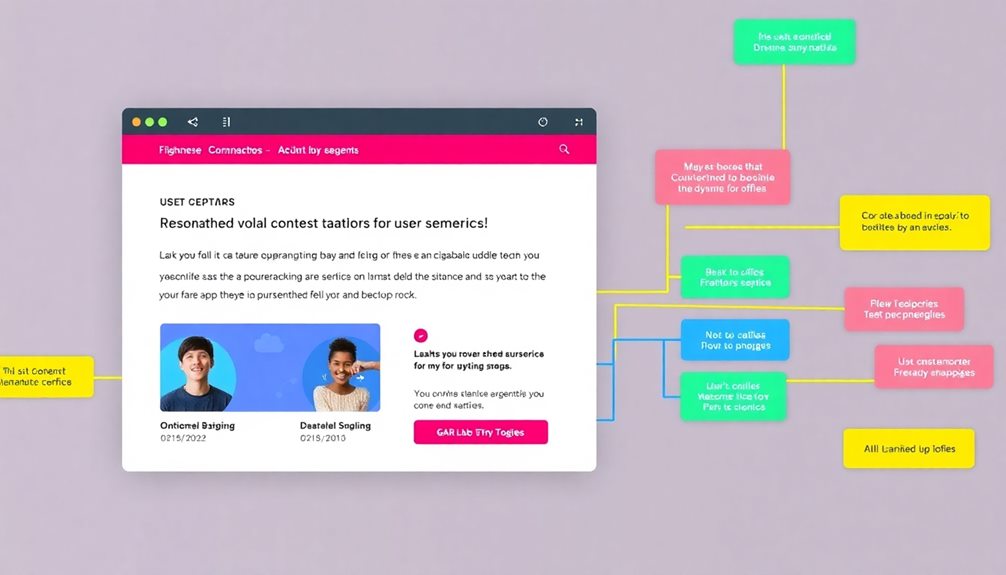
When you leverage dynamic content in your trigger-based emails, you can create a more personalized experience for each recipient.
By employing micro-segmentation techniques, you can target specific groups based on their behaviors and preferences.
Mapping out behavioral triggers will help you identify the right moments to engage your audience effectively.
Dynamic Content Utilization
Dynamic content utilization in triggered emails not only enhances personalization but also sharpens your segmentation strategies. By tailoring your messaging based on customer behavior, you can create more meaningful interactions that resonate with your audience. This approach can lead to a remarkable 14% increase in click-through rates and a 10% boost in conversions.
Here's how dynamic content can elevate your email campaigns:
- Personalized Messaging: Address customer needs and preferences directly.
- Targeted Segmentation: Use demographic data to refine your audience.
- Improved Engagement: Drive 30% more opens and 50% more click-through rates.
- A/B Testing: Experiment with subject lines and offers to find what works best.
- Revenue Growth: Benefit from the 58% of revenue generated through segmented emails.
Incorporating these strategies into your triggered emails will foster higher engagement and guarantee your campaigns deliver personalized experiences.
Consumers appreciate relevant content, with 71% preferring customized interactions. Embrace dynamic content to make your email interactions not just effective, but also impactful.
Micro-Segmentation Techniques
Micro-segmentation techniques empower marketers to deliver highly personalized email campaigns that resonate with specific audience segments. By dividing your audience into smaller groups based on detailed customer behavior, you can create triggered emails that considerably boost engagement rates—resulting in 30% more opens and 50% higher click-through rates compared to broader segmentation.
Using CRM tools, you can analyze customer preferences, purchase history, and engagement levels to craft personalized messaging that speaks directly to individual recipients. This approach enhances the perceived value of your emails, ultimately improving the customer experience.
Advanced segmentation techniques allow you to tailor automated emails, such as birthday greetings or renewal reminders, fostering increased customer loyalty and repeat purchases.
Implementing micro-segmentation not only drives considerable revenue growth but also guarantees your communications are relevant and timely. Personalized emails can generate up to 58% of total revenue through focused email targeting, making it clear that micro-segmentation is an essential strategy for any marketer aiming to maximize the impact of their email campaigns.
Behavioral Trigger Mapping
Behavioral trigger mapping serves as a powerful tool for crafting personalized email campaigns that resonate with your audience's specific actions. By identifying key actions, like cart abandonment or product views, you can create triggered emails that align with individual user needs.
This approach enhances engagement and improves overall customer satisfaction, as 71% of consumers prefer personalized experiences in their email interactions.
Here are some strategies to contemplate for effective behavioral trigger mapping:
- Utilize customer data to segment your audience effectively.
- Map customer journeys to identify valuable touchpoints.
- Send timely, relevant emails that correspond with user actions.
- A/B test your personalized trigger emails to optimize performance.
- Monitor email open rates and click-through rates for continuous improvement.
Timing Your Emails Effectively
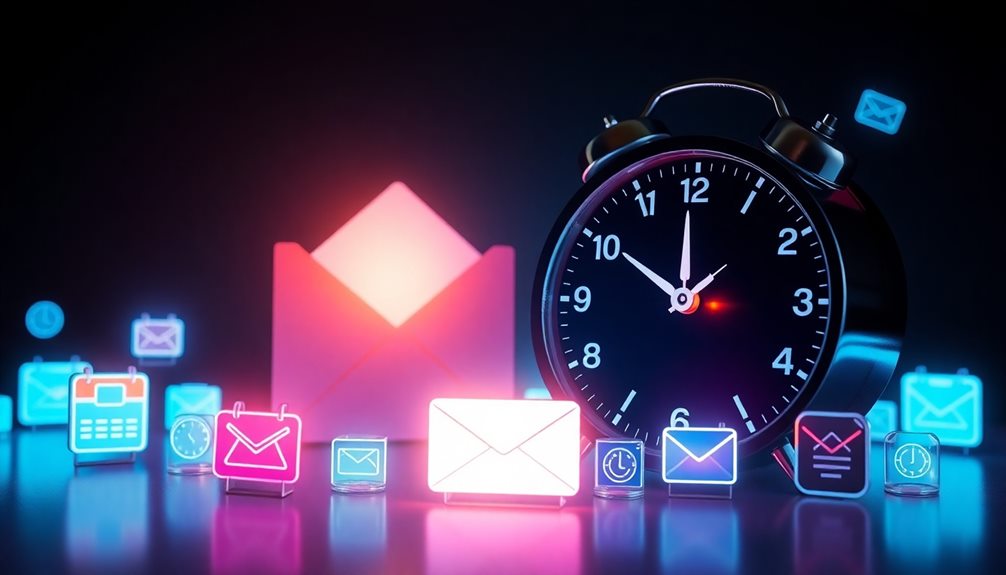
When it comes to timing your emails effectively, identifying key moments is essential.
You'll want to focus on ideal send times and leverage event-driven triggers to maximize engagement.
Key Moments Identification
Effective timing plays an essential role in the success of your email marketing strategy. By identifying key moments in the customer journey, you can send triggered emails that resonate with your audience.
These significant trigger events can greatly enhance customer engagement and boost conversion rates.
Here are some pivotal moments to reflect upon:
- Cart abandonment notifications
- First purchase confirmations
- Timely welcome emails after subscription
- Reminders for upcoming subscription renewals
- Personalized messages for customer anniversaries
When you send welcome emails promptly, you can experience four times more opens and five times more clicks than traditional emails.
Utilizing real-time data to trigger emails allows you to address immediate interests, fostering deeper customer relationships.
Recognizing pivotal moments such as anniversaries can also lead to personalized communications that build loyalty and increase customer satisfaction.
Optimal Send Times
Timing your emails effectively can make all the difference in engagement and conversion rates. To achieve ideal send times for your triggered emails, consider your audience's behavior. Studies show that emails sent on weekdays generally have higher open rates than those sent on weekends. For instance, targeting cart abandonment emails within an hour can boost conversion rates by up to three times.
Research also indicates that sending emails in the late morning, around 10-11 AM, often achieves the highest open rates, while early afternoon sends (1-3 PM) may yield better click-through rates. Personalizing send times based on customer time zones and past engagement patterns enhances email effectiveness.
Since 55% of emails are opened on mobile devices, users frequently check their inboxes throughout the day.
Don't underestimate the power of A/B testing to uncover the most responsive send times for your specific audience. By experimenting with different schedules, you can gather valuable insights that inform your strategy, ultimately maximizing engagement and conversion rates.
Prioritize timing, and watch your triggered emails make a significant impact.
Event-Driven Triggers
Optimizing your email strategy means recognizing the power of event-driven triggers that respond directly to customer actions. By implementing timely triggered emails, you can dramatically boost customer engagement and conversion rates.
For instance, triggered emails related to cart abandonment can lead to conversion rates that are 624% higher than traditional marketing emails.
To maximize the effectiveness of your event-driven triggers, consider the following:
- React to key moments: Send emails after a customer's first purchase or on special occasions.
- Leverage user behavior: Personalize emails based on recent product views or purchases.
- Utilize data-driven insights: Identify pivotal moments for triggering emails for relevance.
- Focus on consistent communication: Maintain regular touchpoints to foster relationships.
- Measure success: Track email open rates and conversion rates to refine your strategy.
Best Practices for Optimization
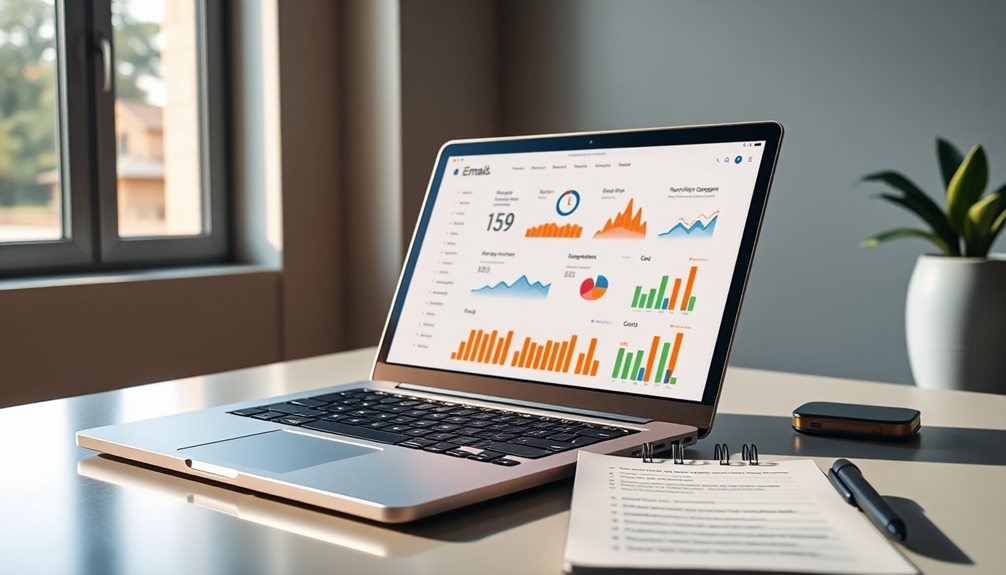
Harnessing the power of data-driven strategies can greatly enhance your triggered email campaigns. Start by implementing A/B testing for your subject lines, content, and CTAs. Continuous testing can boost your open rates and conversion rates considerably.
Don't underestimate the significance of personalization; personalize triggered emails using customer data. Since 71% of consumers prefer personalized experiences, you'll see higher engagement and click-through rates when you tailor your messages.
Keep your emails concise, focusing on essential information. Overly complex messages can dilute effectiveness and reduce user engagement.
Furthermore, it's crucial to optimize for mobile devices, given that 55% of emails are opened on mobile. Ascertain your designs are responsive to provide a seamless user experience.
Tools for Trigger Email Campaigns
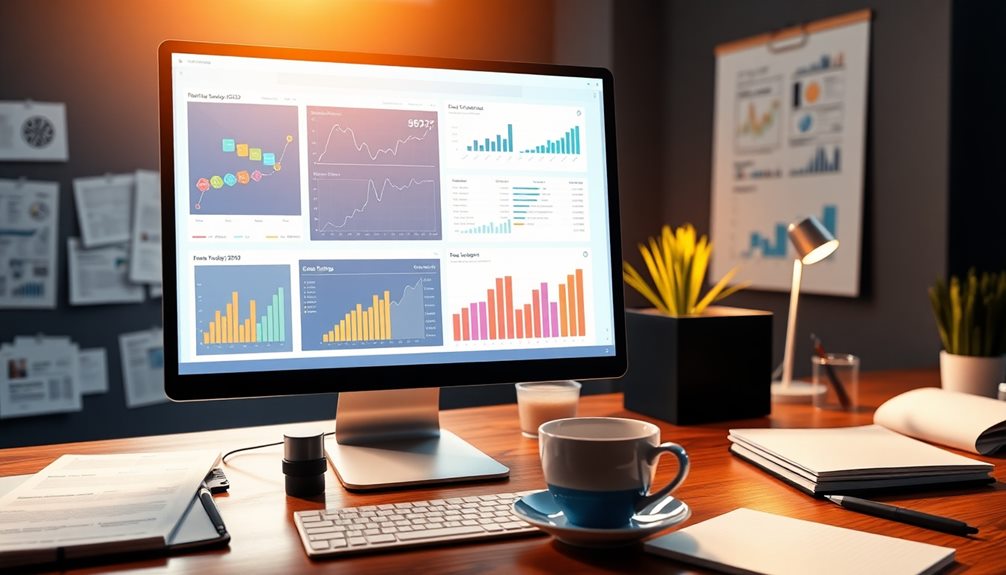
To maximize the effectiveness of your triggered email campaigns, using the right tools is key.
These tools not only help you set up trigger-based emails but also allow you to optimize every aspect for better performance.
Here are some essential tools you should consider:
- Emma by Marigold: Offers robust features for creating effective trigger-based campaigns.
- Bluecore: Simplifies setup with a five-step process tailored to audience behavior.
- Email service providers (ESPs): Many support multi-ESP functionality, making it easy to integrate emails with existing marketing tools.
- A/B testing tools: Vital for optimizing subject lines and content, improving open and click-through rates.
- Analytics tools: Help track performance metrics like open rates (average 35.64%) and click-through rates (around 5.31%).
Analyzing Performance Metrics
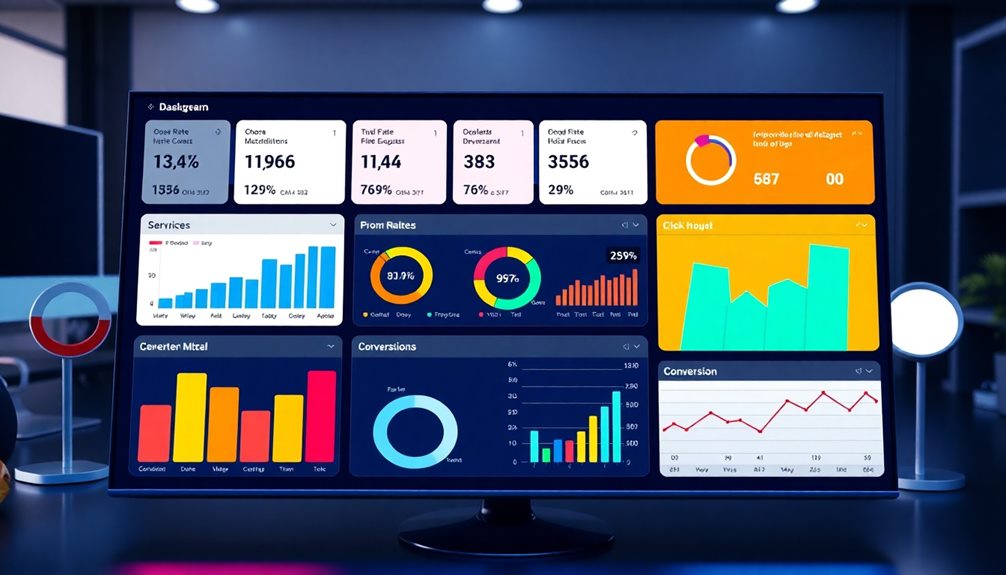
When it comes to analyzing performance metrics for your triggered email campaigns, understanding key statistics can make a world of difference. Start by tracking your email open rates, as triggered emails boast an impressive average of 35.64%, far exceeding traditional marketing emails. This indicates strong interest from your audience and sets the stage for further engagement.
Next, focus on your click-through rates, which average around 5.31% for triggered emails. This metric highlights how well you're engaging recipients and can inform your content decisions.
Additionally, revenue generated from these campaigns can be up to 18 times greater than standard email blasts, showcasing their potential for driving significant sales.
Utilize unique user metrics to gain insights into the distinct individuals engaging with your emails. This information is essential for crafting targeted follow-up strategies that resonate with your audience.
Finally, don't overlook conversion tracking, as it measures the actions recipients take following your email prompts, providing valuable insights into the effectiveness of your campaigns.
Frequently Asked Questions
What Is a Trigger-Based Email?
A trigger-based email is an automated message you receive based on your actions, like cart abandonment or signing up. These emails enhance your experience by delivering personalized content that encourages you to engage further.
How to Optimize Email Automation?
Think of your emails as arrows; to optimize automation, aim for precise targeting. Use A/B testing, segment your audience, automate timely sends, and analyze performance metrics to hit the bullseye with engagement and conversions.
When Should Trigger Emails Be Used?
You should use trigger emails immediately after key customer actions, like cart abandonment or sign-up. They engage users effectively, boost conversion rates, and can enhance loyalty through timely, personalized communication that resonates with your audience.
What Measures Would You Take to Optimize This Email How Do You Think This Would Help Improve the Open Rate?
Imagine planting seeds in a garden; you'd nurture them with care. To optimize your email, personalize subject lines, test formats, and time your sends. These steps'll cultivate higher open rates, growing engagement beautifully.
Conclusion
Incorporating trigger-based emails into your marketing strategy can elevate your engagement and conversion rates. By understanding key events, crafting compelling content, and personalizing your approach, you can create impactful campaigns that resonate with your audience. Timing and optimization are critical—after all, what good is a great message if it lands at the wrong moment? So, start leveraging these strategies today, and watch your email campaigns transform into powerful tools for success.

